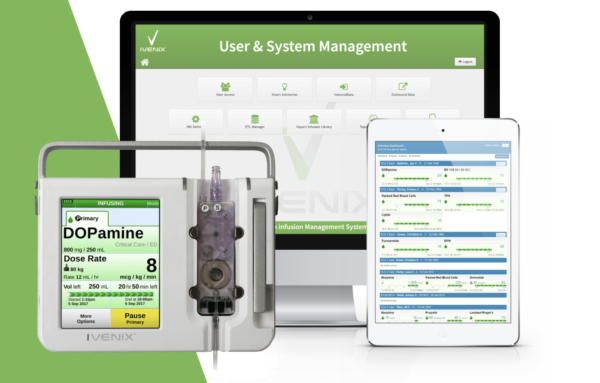
Of the roughly 1.5 million adverse drug events are reported annually to the FDA, more than half are attributed to infusion-related errors.
The automated pumps that deliver medication to patients have a higher risk and severity of error than other types of medication administration and have been linked to many instances of patient injury or death because of incorrect dosing due to human or software error.

Solving Healthcare’s Provider Data Problem Starts with Interoperability
Break down the silos. Take control of your provider data.
Last month, medical device company Ivenix received clearance for a new smart infusion pump meant to address the safety issues endemic to the industry with more streamlined and intuitive technology.
The company received its clearance after three years under the more stringent FDA guidelines required as part of the agency’s increased oversight of the industry.
Ivenix has been at the problem for a long time. Initially founded as Fluidnet Corp. back in 2001, the company has raised around $90 million on the road to its regulatory approval.
The North Andover, Massachusetts-based company’s pumps have a touchscreen interface which makes it easier to dial in dosage accuracy. Additionally, the software housed on the pump is able to ingest clinical data and determine potential hazardous drug interactions.
“When we started looking at the existing problems in the industry, the thing we recognized is that a lot of the issues were related to information,” Ivenix Chief Technology Officer George Gray said.
“In order for the person to make a good clinical decision they need to have the necessary information handy and what we found is that existing pumps didn’t communicate, present or pull in relevant information well.”
Alongside the smart pumps themselves, company also developed an associated dashboard that allows clinicians to see infusion information from their computer or mobile device.
“At their central station, nurses can see vital signs like respiration rate, heart rate and blood pressure, but the most dangerous thing – which are drugs they’re infusing – isn’t able to be viewed in the same way,” Gray said.
Cybersecurity is a major concern with pumps, especially after security researchers demonstrated the ability to hack the devices and remotely change dosage.
In order to reduce the risk of attack, Gray said Ivenix’s devices don’t directly respond to incoming signals and instead communicate through an encrypted server, which adds another layer of security. He added that the team has also built technology that can detect potential hacking attempts and respond if necessary.
Outside of its ability to reduce medical error, Ivenix also pitches its product as a cost-saver for providers. The company says that its system can reduce the price of ownership of its fleet of infusion pumps, while also being priced “on par with existing pump options.
Pumps are moved around a hospital regularly and are often lost or misplaced, requiring providers to purchase additional pumps in order to meet patient needs. Ivenix devices have location awareness built in and its centralized management system allows for more efficient use of a provider’s fleet of infusion pumps.
One of the advantages of a smart pump is the ability to remotely update software to add new security patches, fix bugs, and expand features on the fly.
The company’s technology also has the ability to easily update drug libraries remotely and manage the status of pumps for more efficient maintenance and repair.
Even with these supposed advantages, it will be an uphill climb for the company. The infusion pump market is dominated by three major players: Hospira, Becton Dickinson and Baxter.
At least at first the company’s commercialization efforts will focus on a limited market release in a few sites which will help develop best practices in implementation and build data proof points to boost sales.
Gray touts the ability of the Ivenix pump to compete and thrive in the market through technology can link up with clinical systems to make the infusion process more automated and reduce risk by predicting and alering clinicians of potential issues.
“If you’re going to enter into this marketplace against these giant companies, what you really need to do is be part of this larger information ecosystem,” he said.
Picture: Ivenix








